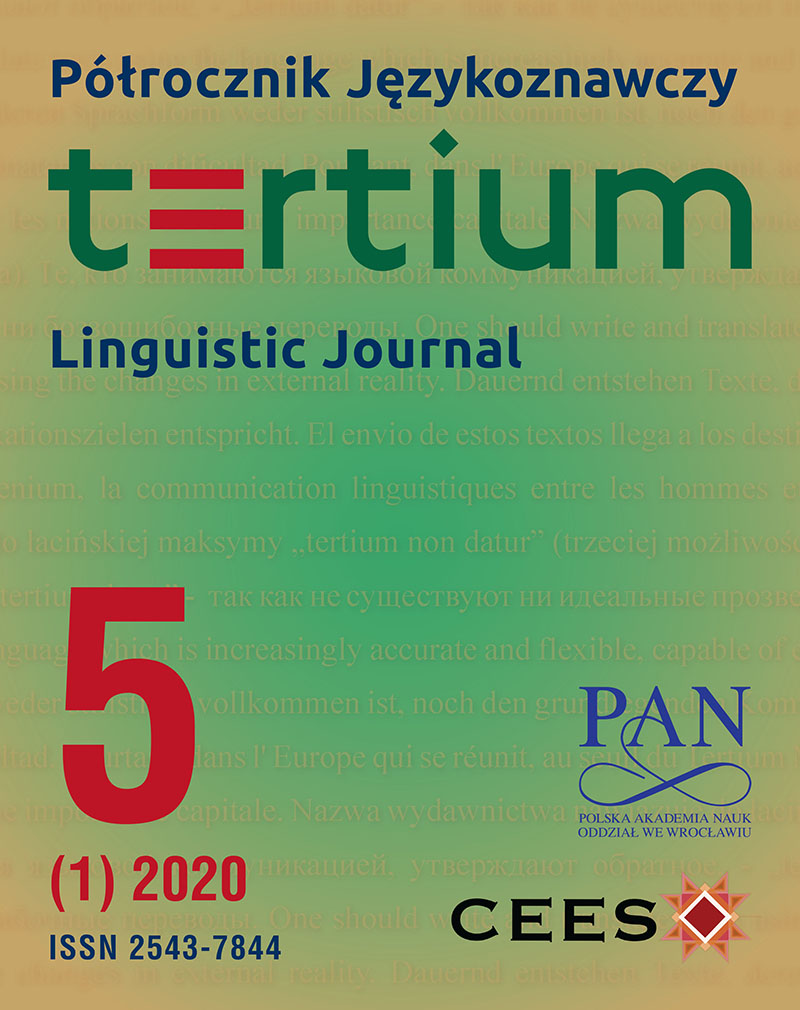Application of Formal and Dynamic Equivalence to Chosen Press Releases Published by the European Commission Related to the Issue of the Coronavirus Pandemic
Application of Formal and Dynamic Equivalence to Chosen Press Releases Published by the European Commission Related to the Issue of the Coronavirus Pandemic
Author(s): Marcelina PietrygaSubject(s): Media studies, Theory of Communication, Health and medicine and law, Translation Studies, EU-Legislation
Published by: Krakowskie Towarzystwo Popularyzowania Wiedzy o Komunikacji Językowej Tertium
Keywords: press release; translation; dynamic equivalence; formal equivalence; European Commission
Summary/Abstract: The aim of this article is to analyse the scope of formal and dynamic equivalence in three press releases published by the European Commission in April 2020. The discussed press releases refer to the issue of the coronavirus pandemic and various measures taken by the Commission as a response to the crisis caused by the pandemic. Simultaneously, a particular attention is placed on the influence of the above-mentioned types of equivalence on the message covered by the press releases. Moreover, the study is based on three languages English, German and Polish. As the research shows, the two types of equivalence may apply to various aspects of texts introducing a wide range of effects to the translation. Whereas formal equivalence is usually present in shorter forms, dynamic equivalence corresponds to larger units of text. Additionally, it has been proved that the two types of equivalence are not applied in both translations to an equal extent. W ramach niniejszego artykułu przedstawiona została analiza zastosowania ekwiwalencji formalnej oraz dynamicznej w wybranych komunikatach prasowych Komisji Europejskiej, dotyczących pandemii koronawirusa w Europie oraz działań podjętych przez Komisję w związku z pojawiającym się kryzysem, wywołanym pandemią. Ze szczególną uwagą analizowany jest również wpływ ekwiwalencji zastosowanej w tłumaczeniu na przekaz komunikatu. Analizie poddane zostały trzy komunikaty prasowe, opublikowane na stronie internetowej Komisji Europejskiej w kwietniu 2020 roku. Ponadto badanie opiera się na trzech wersjach językowych: angielskiej, która jest wersją źródłową omawianych komunikatów prasowych oraz jej dwóch tłumaczeniach: na język polski oraz niemiecki. Badanie wykazało zależność stopnia ekwiwalencji zastosowanej w tłumaczeniu od charakterystyki danego języka, a także cech językowych komunikatu prasowego. Ponadto zarówno w przypadku polskiej, jak i niemieckiej wersji językowej pomimo pojawienia się obu typów ekwiwalencji większość stanowi ekwiwalencja dynamiczna. Zabieg ten pozwala m.in. na doprecyzowanie informacji zawartej w danym komunikacie prasowym, a także ma wpływ na stopień zastosowanego ładunku emocjonalnego.
Journal: Półrocznik Językoznawczy Tertium
- Issue Year: 5/2020
- Issue No: 1
- Page Range: 97-115
- Page Count: 19
- Language: English

